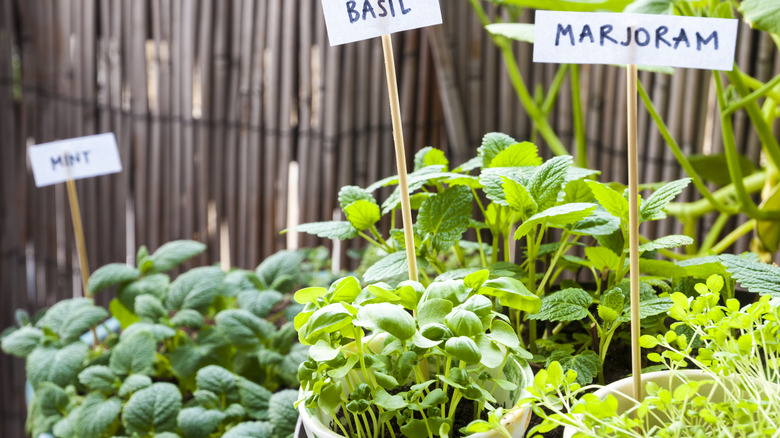This Simple Hack Turns Plastic Containers Into Functional Plant Labels
If you're a proud follower of garden center math, you probably have more plants, bulbs, and seed packets than necessary in your home and yard. After all, who can resist the allure of gorgeous plants and flowers? However, keeping track of all of them, remembering their names at the drop of a hat, and catering to their unique requirements could quickly become problematic if you're not a garden whiz. This is where waterproof plant labels come in handy. Simply grab an empty plastic container, give it a few snips, and jot down the name of the species.
Ideally, you'd pop into your nearest nursery or go online to buy a few plastic labels for your green friends, but why spend your hard-earned money on labels you can make at home? Besides saving you money, this simple hack allows you to reuse your plastic containers and reduce the amount of plastic waste you contribute to landfills. Better yet, you can use any plastic container you have on hand, including empty shampoo bottles, milk jugs, yogurt and ice cream tubs, and takeout boxes.
Repurpose old plastic containers into plant labels
Begin by gathering supplies for the hack. You'll need a plastic container, sharp scissors (box cutters and shears work, too), and a permanent marker. Once you have everything you'll need, wash the container, remove the sticky label from its surface (if applicable), and dry it. Now, grab your scissors and cut off the top and bottom of the container to make a rectangle or square-shaped open box that's easier to turn into labels. Snip the ends of the box to get flat surfaces.
Finally, fashion 1½ to 2-centimeter wide strips from the flat surface. Voila! Your plant labels are ready. Use them as they are, or adjust their length to your preference. You can even cut one of the ends into a triangle shape to make it easier to insert in the soil. When you're happy with the label, use a permanent marker to write the name of the plant on it. If you want the ink to be a bit more permanent and not fade after one to two years, use a paint marker. Once your seedlings grow into plants and you repot them, create a hole in one of the ends with a hole punch, insert a string, and tie it to the foliage. Finally, don't throw away the top and bottom parts of the container. Depending on their shape, you can repurpose them as label holders, plant saucers, or handheld shovels.
